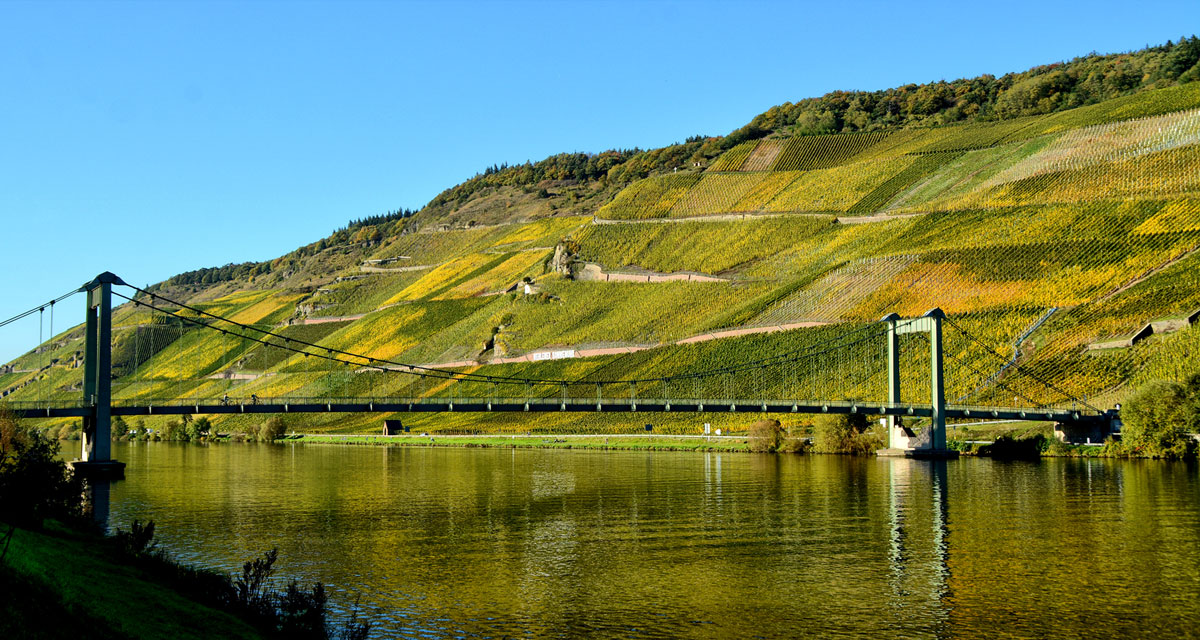DIRECTORY DR. HERMANN
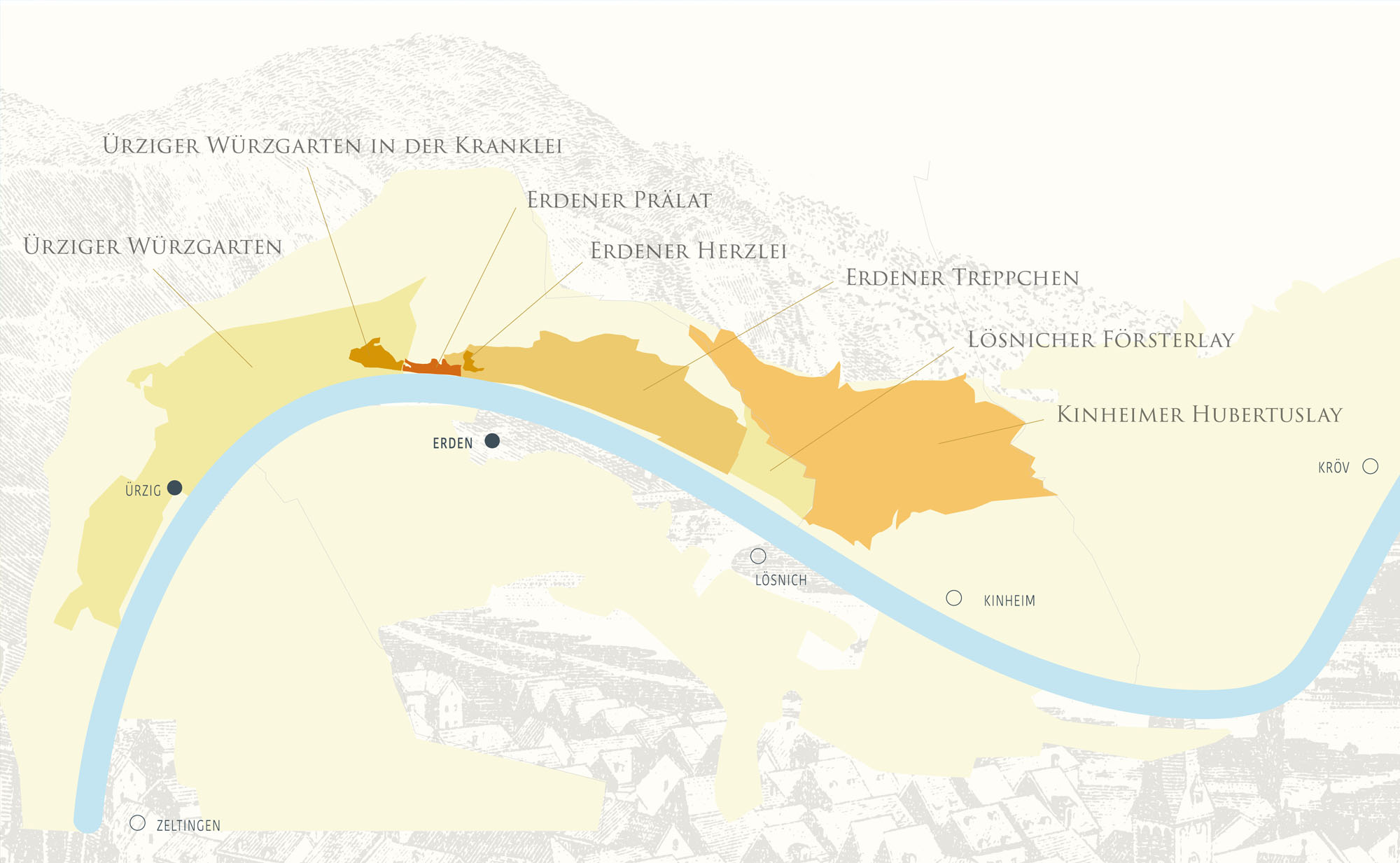
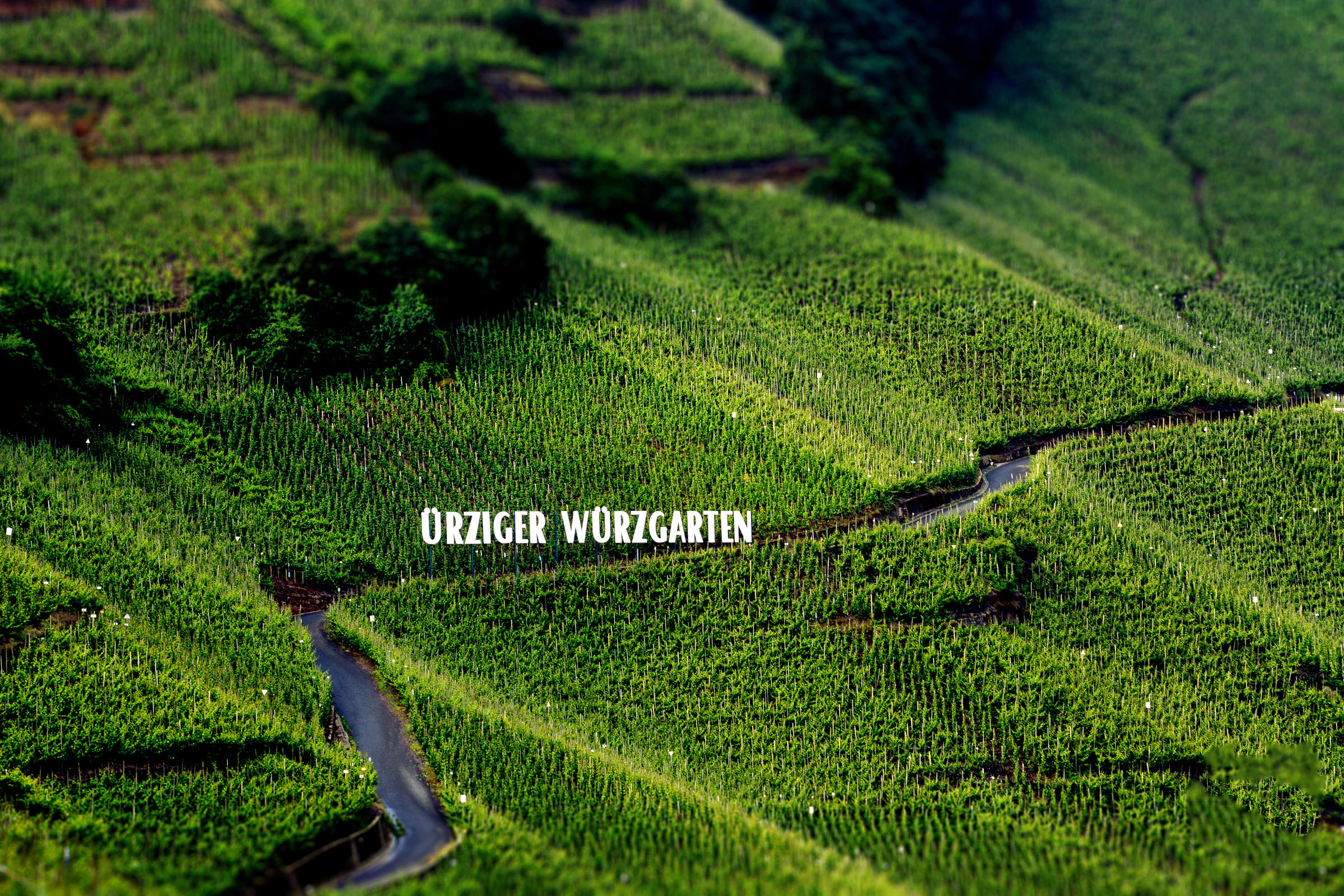
ÜRZIGER WÜRZGARTEN
The red, iron-rich soil of ryolite, a volcanic rock, sandstone and slate gives the world-famous Ürziger Würzgarten its unique character.
Up to 100-year-old, ungrafted Riesling vines produce excellent, powerful and multi-layered wines with exotic, fruity and spicy aromas. The wines have enormous ageing potential.

ÜRZIGER
WÜRZGARTEN
IN DER KRANKLEI
The Ürziger Würzgarten in der Kranklei, situated on the imposing rock (= Grand Lei) with the sundial, is the prime piece of the Ürziger Würzgarten.
The red sandstone and slate soil gets its color from iron deposits and is also known as Rotliegendes. Rieslings that grow on these slate soils sometimes need some time after bottling to develop their aromas.
Once they have reached their full quality potential, they are very individual and impressive personalities that can age for generations.
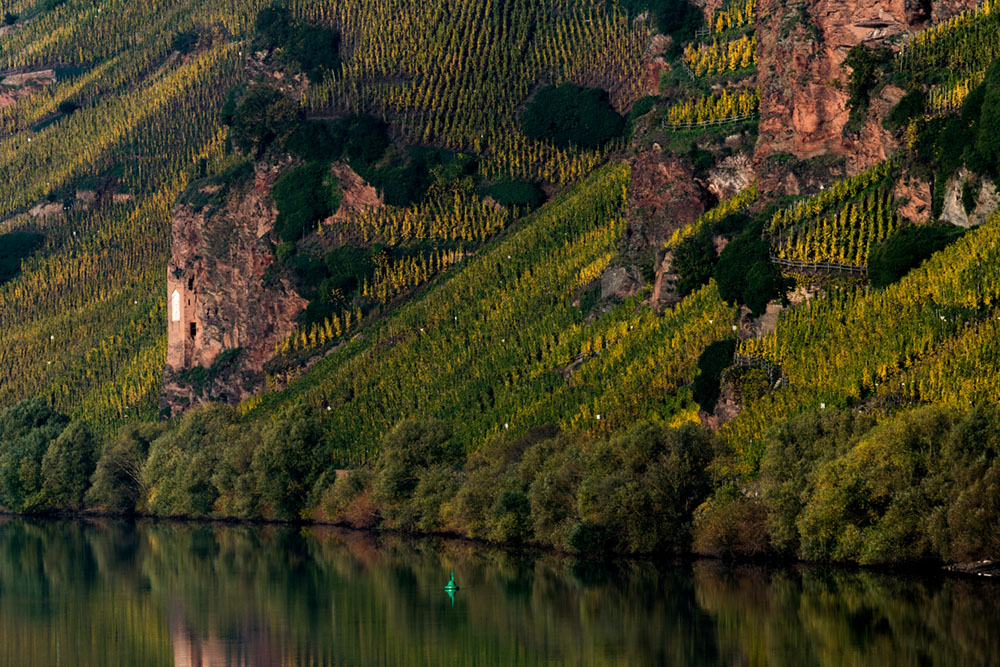
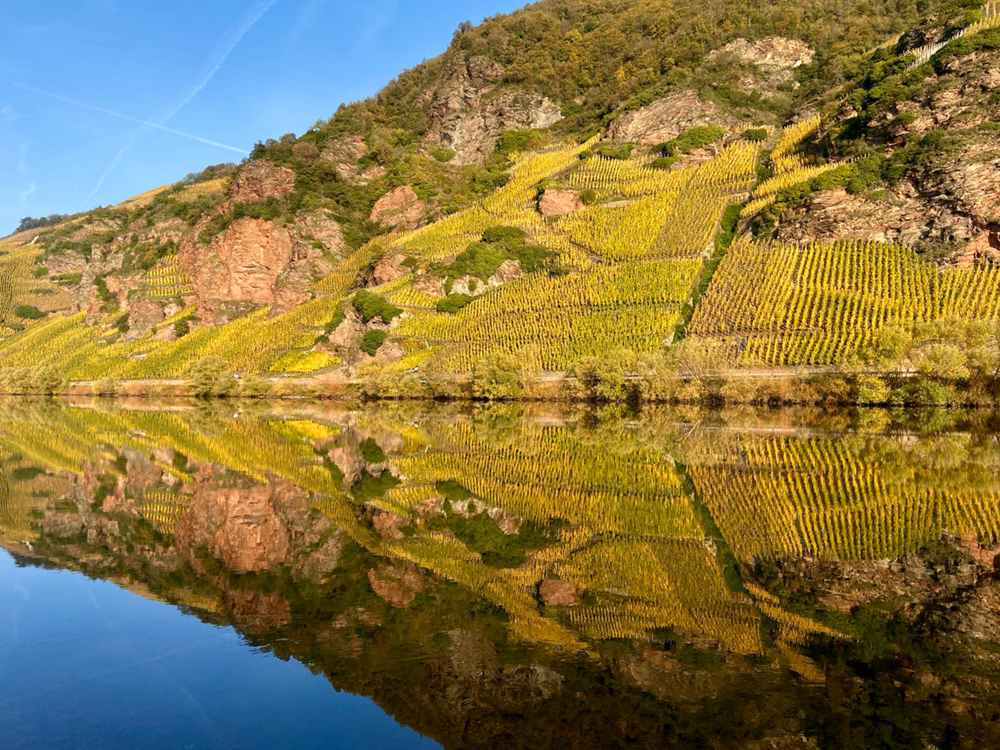
ERDENER PRÄLAT
Erdener Prälat, with just 1.5 hectares of vines, is one of the most famous vineyards in Germany. This vineyard is extremely steep and planted with ungrafted Rieslings that are up to 120 years old. Perfect sun exposure, gray and red slate soil and an extraordinarily warm microclimate make it possible to produce top-class Rieslings here every year.
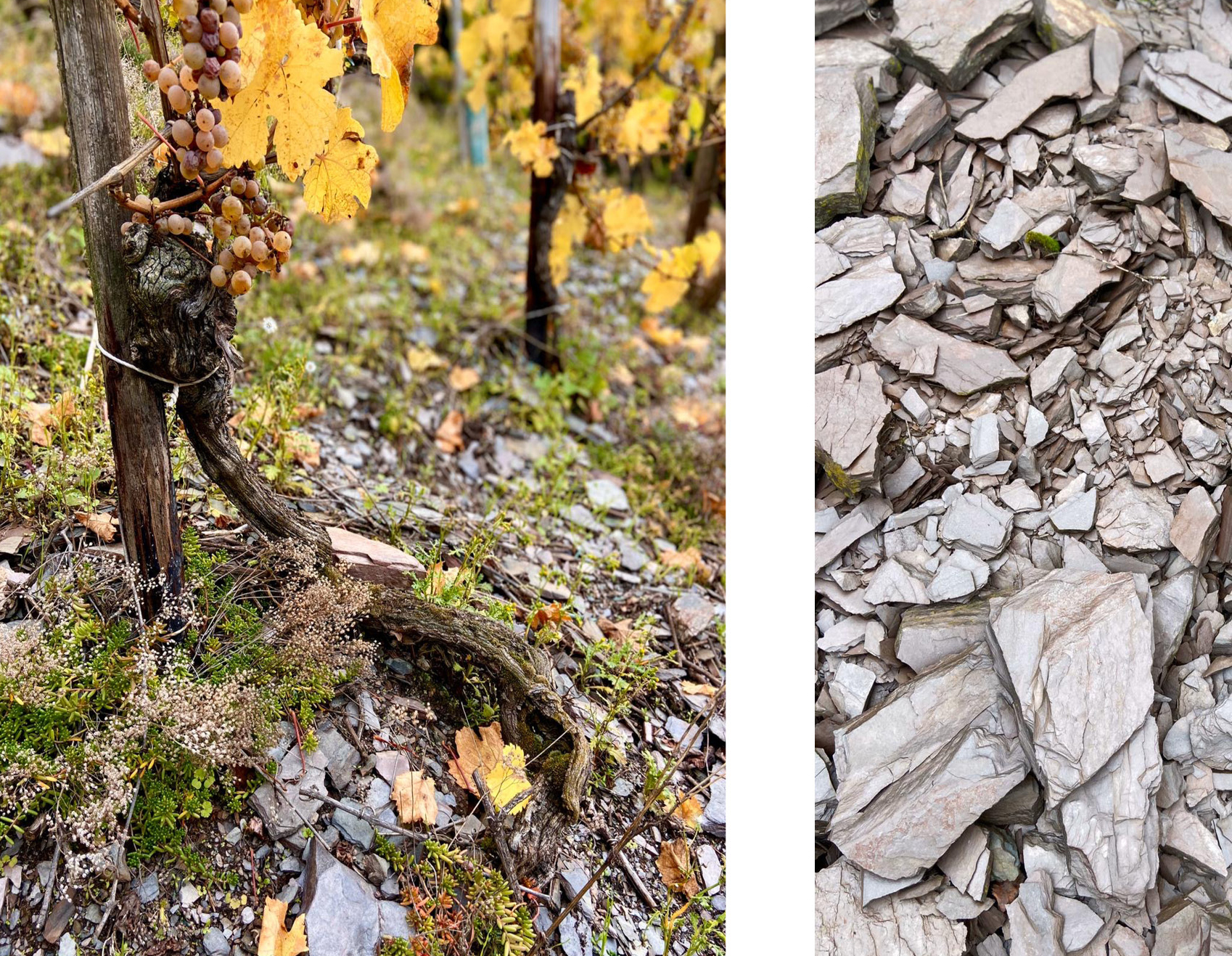
ERDENER HERZLEI
The monopollage of the Dr. Hermann winery, the Erdener Herzlei, borders directly on the legendary Erdener Prälat. It is already listed as a top vineyard in the royal Prussian vineyard classification of 1868 and, with its five steep slate terraces, belongs to the core area and thus to the best part of the Erdener Treppchen.
The single-rooted vines, up to 130 years old, grow here on very poor, gray slate soil and produce wines of the highest finesse.
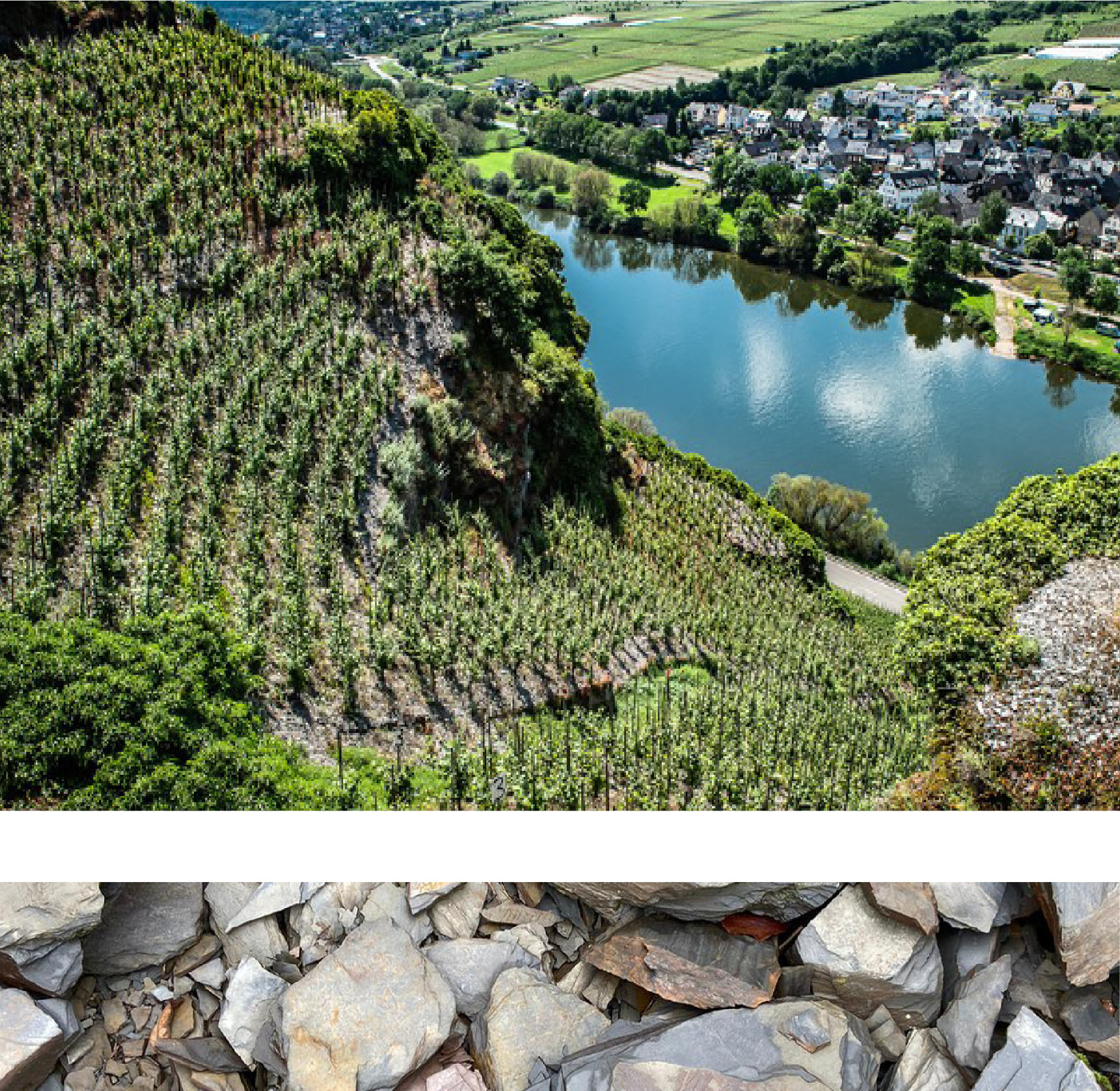

ERDENER TREPPCHEN
The famous Erdener Treppchen is the steep slope opposite the village of Erden. With its south to south-west exposure and steep vineyards,
is predestined for growing the demanding Riesling grape.
This location owes its name to the stone steps built centuries ago into the extremely steep slopes. Many varieties of slate can be found in the Erdener Treppchen. The reddish, gray and clay slate produce expressive, creamy, dense, clear, mineral wines with great elegance and finesse.
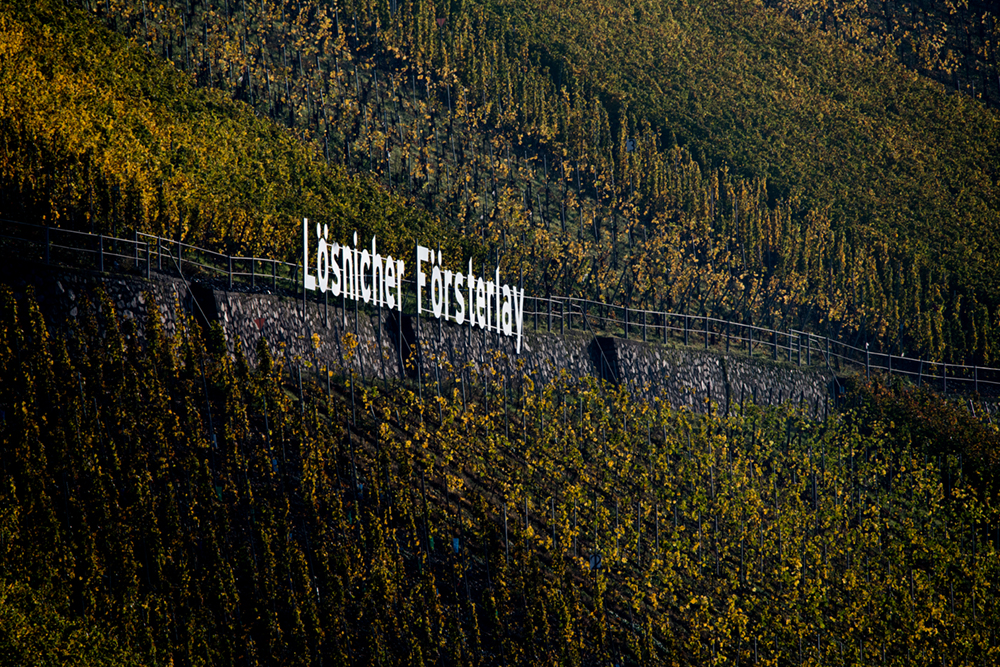
LÖSNICHER FÖRSTERLAY
The Lösnicher Försterlay steep slope, which is only 9.4 hectares in size, was already listed as a top site in the royal Prussian vineyard classification of 1868. The vines here benefit from the unique terroir of the light, weathered clay-slate soil in an ideal south-western exposure with a slope of up to 60%.
This top location produces very fine, polished and elegant Rieslings with a mineral character.
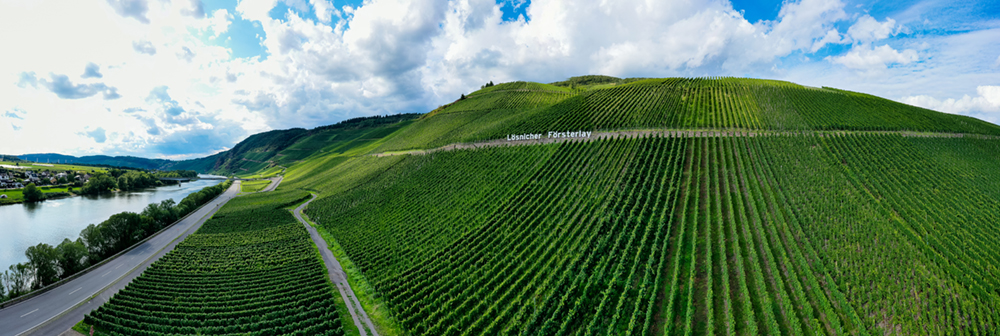
KINHEIMER HUBERTUSLAY
This south/southwest-facing vineyard is located to the east of the Erdener Treppchen. The red-grey slate soil produces fruity, elegant wines with lively acidity.
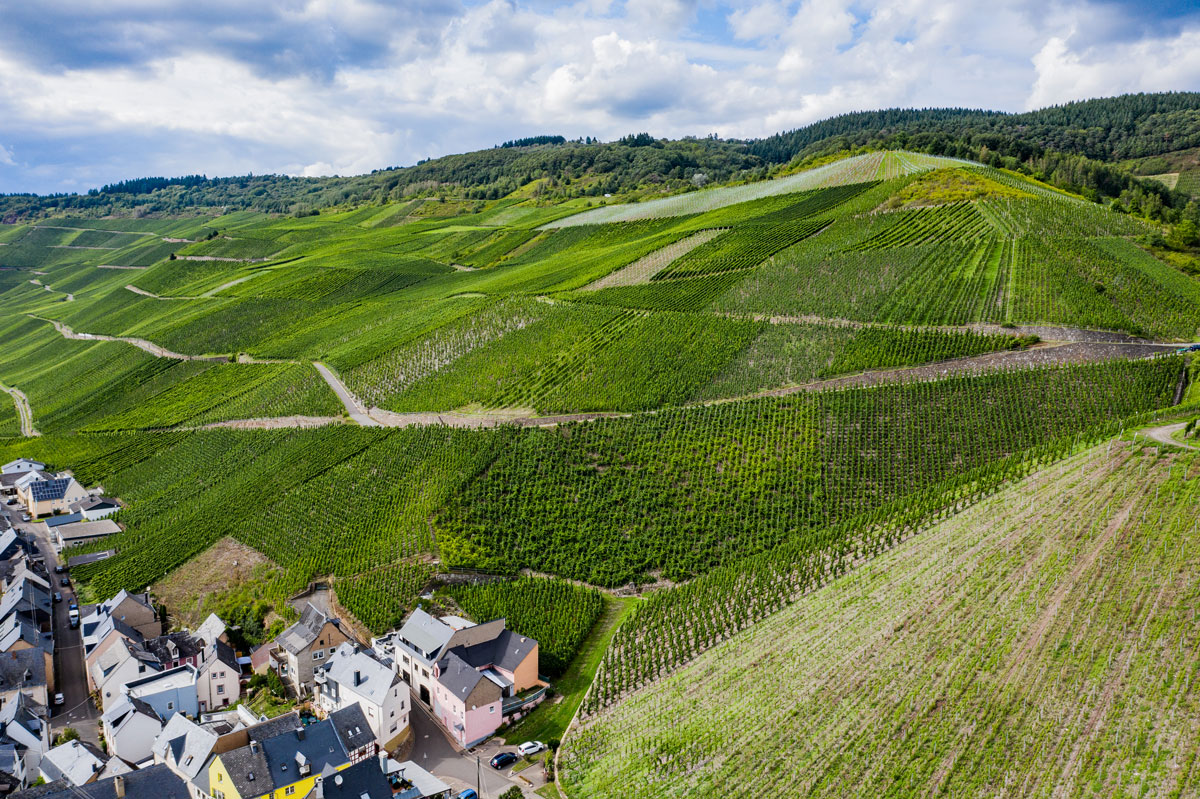
KINHEIMER ROSENBERG
Der Kinheimer Rosenberg wurde bereits im 19. Jahrhundert als Spitzenlage klassifiziert. Hier profitieren die Reben von einer Ausrichtung nach Süd-/Südwesten und einer Neigung bis zu 60%. Der grobe Devonschieferboden bringt hier unsere filigranen Pinot Noirs mit moderaten Alkoholwerten hervor.
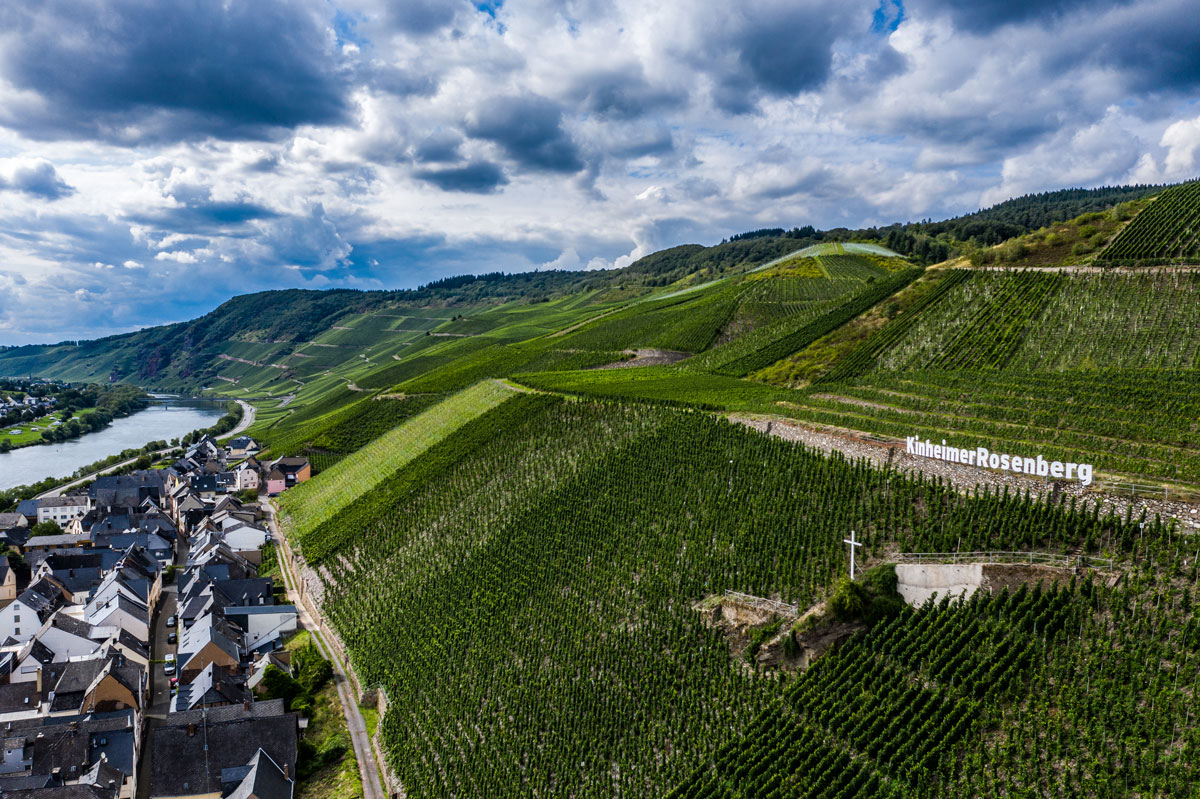
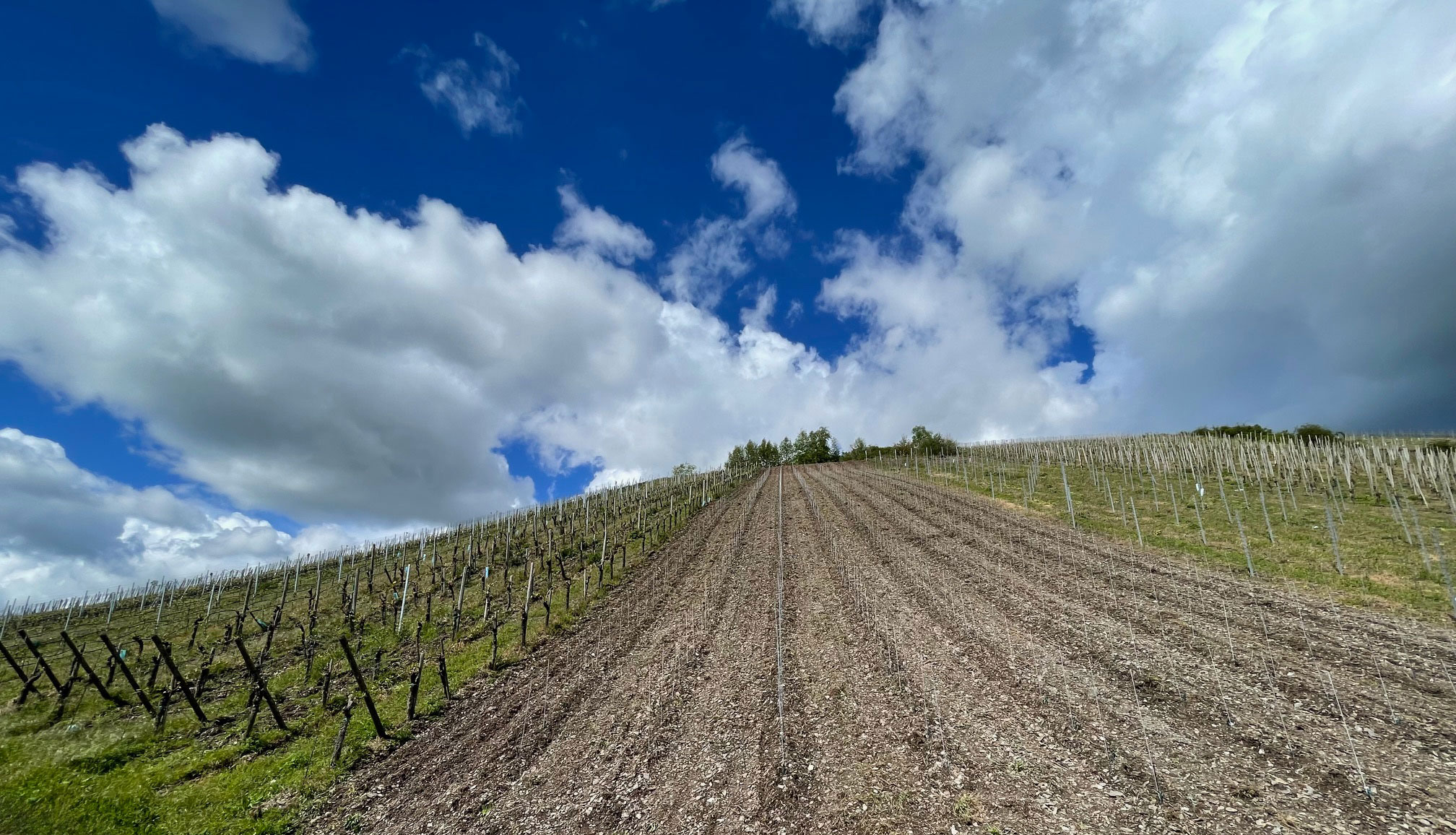
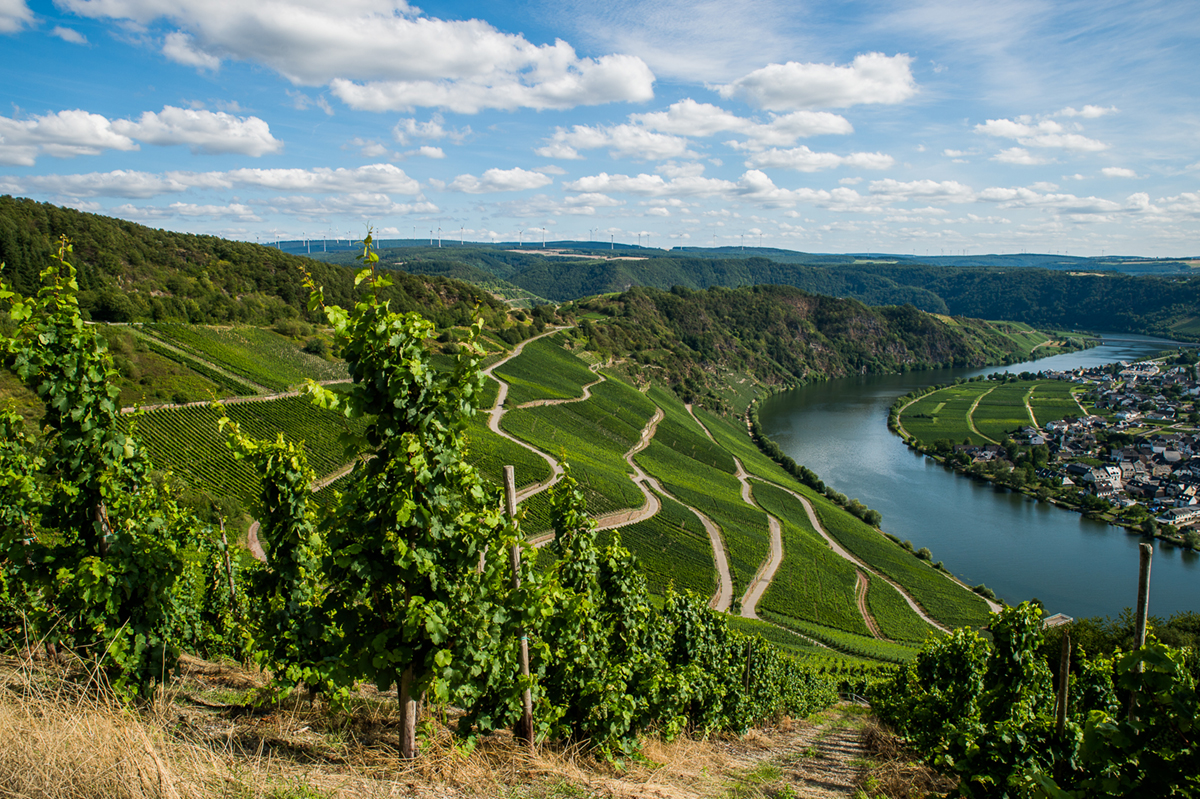
PIESPORTER
GOLDTRÖPFCHEN
Reminiscent of an amphitheater, the Piesporter Goldtröpfchen is one of the Mosel’s top vineyards. Complex and multi-layered Rieslings with lots of fruit and spice are produced on its soil, which consists of slate and lots of fine soil, with an excellent natural water supply.
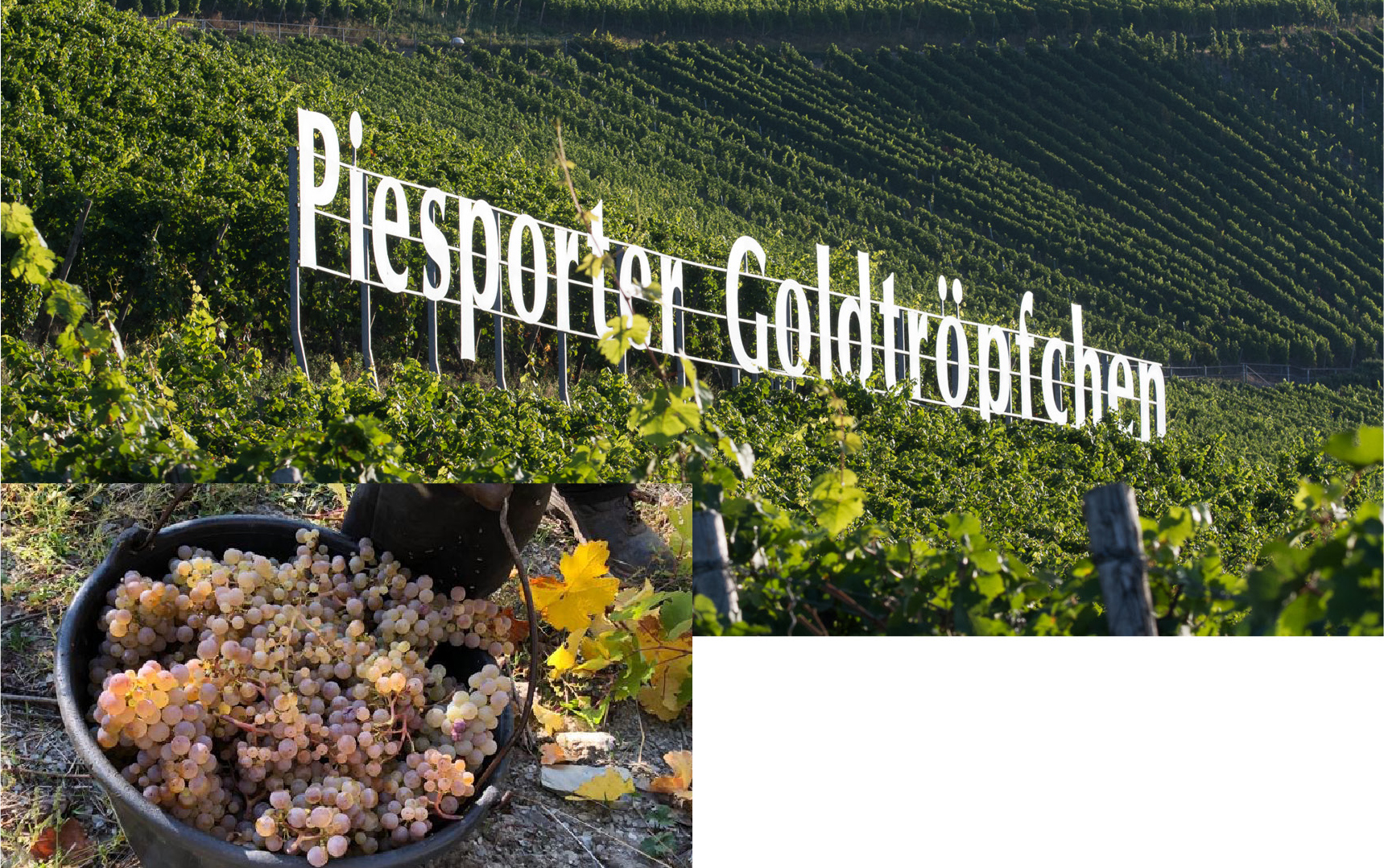
WEHLENER
SONNENUHR
To this day, the Wehlener Sonnenuhr is one of the most important sites in German viticulture. The world-famous sundial was built here in 1842 in the Lammerterley vineyard.
Stony Devonian slate weathered soil gives the wines a dancing fruit and finesse.
.
